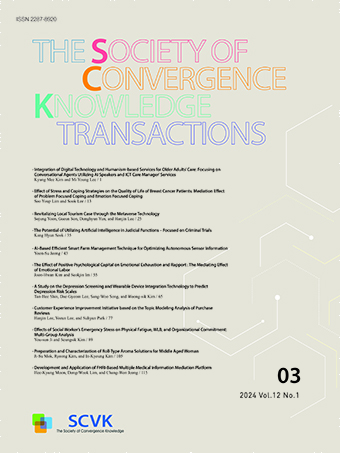Research Article
Abstract
References
Information
소프트웨어 개발 활동은 비즈니스 요구사항 식별과 정의로부터 시작한다. 소프트웨어 비즈니스 요구사항은 실세계의 문제 영역으로부터 개발할 시스템의 솔루션 영역에 관한 목표 및 범위 그리고 행위를 추상적으로 표현한다. 그러나 소프트웨어 요구사항은 여러 원인에 의해 결함이 필연적으로 발생하며 특히 비즈니스 요구사항 정의 단계에서 발생한 결함은 생명주기 전체에 영향을 주어 프로젝트 실패나 품질 저하를 가져올 수 있다. 본 연구에서는 이러한 문제를 해결하기 위하여 기존의 소프트웨어 시스템 요구사항 결함을 비즈니스 요구사항 품질 특성에 맞도록 식별하고 비즈니스 요구사항 결함 예방 모델을 기반으로 결함 유형을 재분류한다. 그리고 이들 결함 유형 간 의존 관계를 정량적으로 제공함으로서 이해관계자 사이의 충돌을 해결하고 견고한 목표를 통해 변경을 최소화하며 또한 일치성을 보장하여 고품질 소프트웨어 개발을 이룰 수 있도록 한다.
Software development activities begin with identifying and defining business requirements. Software business requirements abstract the objectives, scope, and behavior of the system's solution domain from problem domain of the real world. However, software requirements inevitably make defects due to a number of causes. In particular, defects that occur during the business requirements definition phase can affect the entire lifecycle, leading to project failure or quality degradation. In order to solve this problem, this study identifies existing software system requirements defects according to the business requirements quality characteristics and reclassifies the defect types based on the business requirements defect prevention model. It also provide dependencies between defect types quantitatively to resolve conflicts between stakeholders and to minimize changes through solid goals. It also ensures consistency, enabling high quality software development.
- IIBA, A Guide to the Business Analysis Body of Knowledge (BABOK Guide) Ver 3.0, CANADA, 2015.
- 문석재, 이기쁨, “초보학습자의 AI학습을 위한 블록 코딩 기반의 프로그래밍 학습 방법”, 융복합지식학회논문지, Vol. 7, Issue 3, pp. 145-152, 2019.
- Standish Gruop, “Special CHAOS Report on Digital Transformation Project”, www.standishgroup.com, 2016.10.1109/TSE.2009.3
- M. Hamill, K. G. Popstojanova, “Common Trends in Software Fault and Failure Data”, IEEE Tran. on Software Engineering, Vol. 35, Issue 4, pp. 484-496, July-Aug. 2009.
- PM Solutions, “Strategies for Project Recovery”, https://www.pmsolutions.com/resources/category/research/, 2011.
- J.C. Chen, S.J. Huang, “An empirical analysis of the impact of software development problem factors on software maintainability”, Journal of Systems and Software, Vol. 82, pp. 981-992 June 2009.10.1016/j.jss.2008.12.036
- 정진우, “오일샌드 기능 모듈의 변형 및 상태 감지를 위한 모니터링 시스템 개발, 융복합지식학회논문지, Vol. 7, Issue 2, pp. 15-23, 2019.
- I.L. Margarido, J.P. Faria, R.M. Vidal, M. Vieira, “Classification of defect types in requirements specifications: Literature review, proposal and assessment”, 6th Iberian Conference on Information Systems and Technologies (CISTI), Chaves/Portugal, 2011.
- A. A. Alshazlya Ahmed M.ElfatatryaMohamed S.Abougabalb, “Detecting defects in software requirements specification”, Alexandria Engineering Journal Vol. 53, Issue 3, September 2014.10.1016/j.aej.2014.06.001
- V. Basili, D. Weiss. Evaluation of a software requirements document by analysis of change data. In Proceedings of the 5th International Conference on Software Engineering, San Diego, CA, March 1981.
- G.S. Walia, J.C. Carver, A systematic literature review to identify and classify software requirement errors, Information Software Technology. Vol. 51 Issue 7, 2009. 10.1016/j.infsof.2009.01.004
- 황만수, “소프트웨어 요구사항 명세 품질 향상을 위한 결함 분류 및 예방 전략”, 한국IT정책경영학회 논문지, Vol.10, No.6, pp. 1085-1090, 2018.
- Bittner, Kurt, “When Requirements Go Bad”, http://www.ivarjacobson.com, IVAR JACOBSON International, 2009.
- T. L. Saaty, “Decision making with the analytic hierarchy process”, Int. J. Services Sciences, Vol. 1, No. 1, 2008.10.1504/IJSSCI.2008.017590
- F. Fellir, K. Nafil, R. Touahni, “System requirements prioritization based on AHP”, Third IEEE International Colloquium in Information Science and Technology (CIST), Oct, 2014.10.1109/CIST.2014.7016612
- R. V. Vargas, “Using the analytic hierarchy process (ahp) to select and prioritize projects in a portfolio”, PMI Global Congress, Oct. 2010.
- Publisher :The Society of Convergence Knowledge
- Publisher(Ko) :융복합지식학회
- Journal Title :The Society of Convergence Knowledge Transactions
- Journal Title(Ko) :융복합지식학회논문지
- Volume : 7
- No :4
- Pages :1-9
- DOI :https://doi.org/10.22716/sckt.2019.7.4.045




 The Society of Convergence Knowledge Transactions
The Society of Convergence Knowledge Transactions







